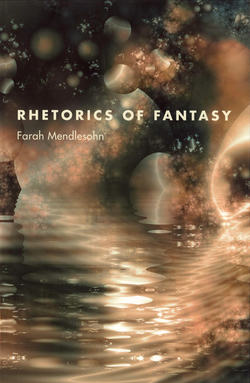Читать книгу Rhetorics of Fantasy - Farah Mendlesohn - Страница 14
На сайте Литреса книга снята с продажи.
The Immersive Fantasy
ОглавлениеThe immersive fantasy invites us to share not merely a world, but a set of assumptions. At its best, it presents the fantastic without comment as the norm both for the protagonist and for the reader: we sit on the protagonist’s shoulder and while we have access to his eyes and ears, we are not provided with an explanatory narrative. The immersive fantasy is that which is closest to science fiction; as such, it makes use of an irony of mimesis, which helps to explain why a sufficiently effective immersive fantasy may be indistinguishable from science fiction: once the fantastic becomes assumed, it acquires a scientific cohesion all of its own. In 2000, this problem of genre led to endless debates about the status of both Mary Gentle’s Ash (2000) and China Miéville’s Perdido Street Station (2000). The effectiveness of the immersive fantasy, however depends on an assumption of realism that denies the need for explication.
The immersive fantasy seems to be described in part by what it is not. We do not enter into the immersive fantasy, we are assumed to be of it: our cognitive estrangement is both entire and negated. The immersive fantasy must be sealed; it cannot, within the confines of the story, be questioned. While an intrusion narrative may drive the plot, as in Perdido Street Station, the setting is already fantastic so that the intrusion is not in itself the source of the fantastic. Most important is that the fantasy be immersive for the point of view characters: unlike the characters of quest fantasies, which I have argued above are better fitted to the category of portal fantasy, the point of view characters of an immersive fantasy must take for granted the fantastic elements with which they are surrounded; they must exist as integrated with the magical (or fantastic) even if they themselves are not magical; they must be “deeply competent with the world they know” (Clute, Strokes 34). As we shall see in chapter 2, successful immersive fantasy consciously negates the sense of wonder in favor of an atmosphere of ennui. M. John Harrison’s The Pastel City (1971) both achieves this negation and uses this trope to mock our expectations.
The use of the immersive mode can undermine the intentions of an author. One might presume that Laurell K. Hamilton’s vampire novels (beginning with Guilty Pleasures [1993]) were intended as horror. They contain the requisite actors: the vampire, the vampire hunter, several nasty monsters, and later a werewolf. But the fantastic elements are not in themselves frightening, and they are most definitely not horrific. The potential horror of the Anita Blake novels is subverted by the structures and language native to immersive fantasy: although a horror novel is read with expectation, the immersive fantasy places much of that expectation on contextual difference, rather than the intruding event. Immersion, with its ironic realism, normalizes the horrific and prevents the sense of attrition that Clute identifies as essential to Horror (personal communication). That these novels ended up in chapter 3 (intrusion fantasy) has nothing to do with the accoutrements of the fantastic by which they are usually categorized; their placement arises, rather, from the trajectory of escalation that shapes both the individual books and the series.
Perhaps most interesting is that it is most commonly in the immersive fantasies that one finds oneself in a fantasy world in which no magic occurs. Sometimes this absence is because the magic takes place elsewhere. But there are many immersive fantasy novels that differ from science fiction only in that they are set in apparently archaic worlds that are not connected to ours: in Mervyn Peake’s Titus Groan (1946), the fantastic is embedded in the linguistic excesses of the text, or in the interaction between the setting and the protagonists. In the immersive fantasy, the plot may be the least fantastical element.
